Beginner Knitting Tips: Everything You Need to Get Your Kids Started
Simple tips, beginner-friendly tools, and easy projects for young knitters
My mum taught my siblings and me to knit when we were all quite young. My memories of knitting in my childhood involve a wooden box with a creaky hinged lid filled with skeins of yarn, a comfy armchair in our living room, and watching the Winter Olympics on a boxy old TV. Still to this day, whenever the Olympics are on, I feel the need to have a knitting project in my lap!
My siblings and I would knit ourselves a new pair of slippers each winter, my mum always helping us with the final stage of binding off and stitching up the backs. How exciting it felt to choose a new colour each year and then to make your very own slippers! (Here’s the instructions for those slippers, in case you’d like to make them.)
All of our kids are knitters now, too. And last week, as we sat at home without power, waiting for the cyclone to arrive and pass, I felt so grateful for this simple, quiet activity—thankful, too, for our box of yarn and knitting needles.
It was a week of jittery energy and cranky moods, but in between the bouts of cabin fever there were these sweet moments where all four kids were curled up on the sofa knitting and listening to their audio book. (I recently saw this post on Instagram about the benefits of knitting for the brain and how it can help ease anxiety. How cool, right?)
I’ve had a few people ask about our knitting materials and tips for teaching kids to knit, so I thought I’d share in case you’d like to get your kids into knitting.
Tips for beginner knitters:
First, you’ll need materials. I always love having a good stock of wool yarn on hand, not just for knitting projects, but for craft projects too (like this cute craft!). For beginner knitters, it’s helpful to start with a thicker, chunky-style wool and larger knitting needles. Thicker yarn is easier to knit, and bigger stitches make it easier to see progress (great for kids) and fix mistakes. Look for yarn that says ‘bulky’ or ‘chunky’ or 12-ply. Or, you can look at needle size recommendations — chunky yarns usually require a minimum of 8mm sized needles (or US 11).
Needle sizes can be confusing because they vary by region. There’s the metric system for measuring the needles, which is based on the actual diameter of the needle in millimetres. In the US, they just use a numbered system from 0 (thinnest) to 50 (thickest). And the UK and Canada use a different numbered system altogether. For example, a 6mm sized needle is a US size 10 and a UK 4. (When you buy wool, it usually will say which needle size it requires, but not always.)
We like to use straight knitting needles with a stopper (or "head") at one end that prevents stitches from slipping off (best for kids). I also prefer bamboo needles over plastic or metal ones.
If you’re new to knitting, you can buy knitting kits from places like We Are Knitters, which come with the yarn and needles you’ll need for the project. We Are Knitters also sells wool and lists the required needle sizes, making it easy to know what you need. Wool and the Gang is another similar online shop.
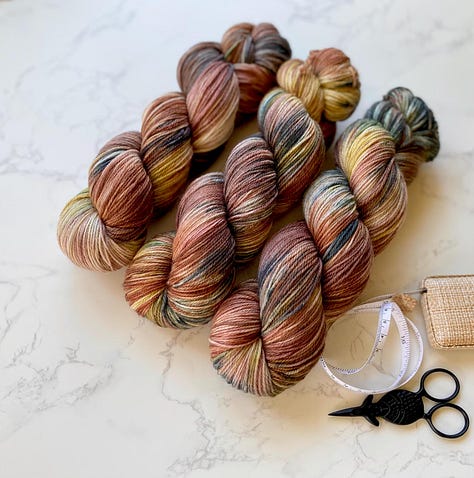

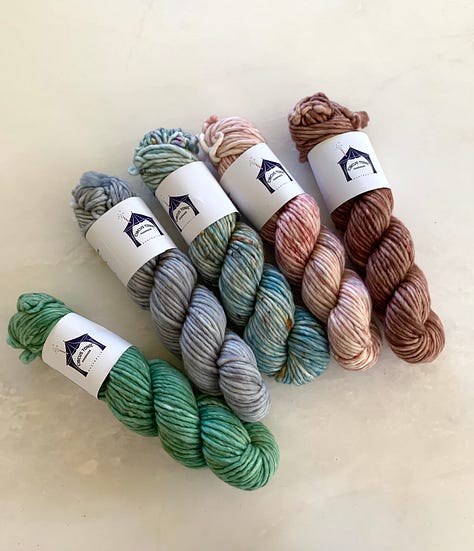
We love finding natural, hand-dyed wool yarns. Some of our favourite yarns have come from Circus Tonic here in Australia. There are also some great sellers on Etsy like Maker Moran and Dragonfly Yarn, both located here in Australia. (You can search Etsy for hand-dyed yarns in your own region.) Hoooked is a European online shop selling strictly eco yarns.
If you don’t know how to knit, there are plenty of helpful videos on YouTube, including the Sheep & Stitch channel with lots of helpful videos for beginners. First, you’ll need to learn to cast on, then you’ll need to learn the basic knit stitch followed by the purl stitch. Knitting is just a combination of these two stitches. Every other stitch pattern—whether it’s stockinette, ribbing, cables, lace, or even complex textures—is created by arranging knits and purls in different sequences. For example, garter stitch is just knitting every row. Ribbing is just alternating knits and purls in a single row, (e.g. knit1, purl1).
For first-time knitters, I’d suggest starting with something really simple, like a scarf, and sticking to just the knit stitch. So you could cast on 10-15 stitches, depending on how wide you want your scarf, and then simply knit each stitch. Our kids learned this rhyme at school to help remember the movements: In through the front door, around the back, out through the window, and off jumps Jack!
Here’s another simple knitting project for beginners: the knitted hood hat. We like to make these as gifts for new babies.
If you have tips to add, please share in the comments below.
xx
For more yarn craft and knitting projects, please check out my At Home With Kids eBook, which has dozens of tips and ideas for keeping kids entertained at home. (I also share a list of favourite craft supplies to keep on hand.)





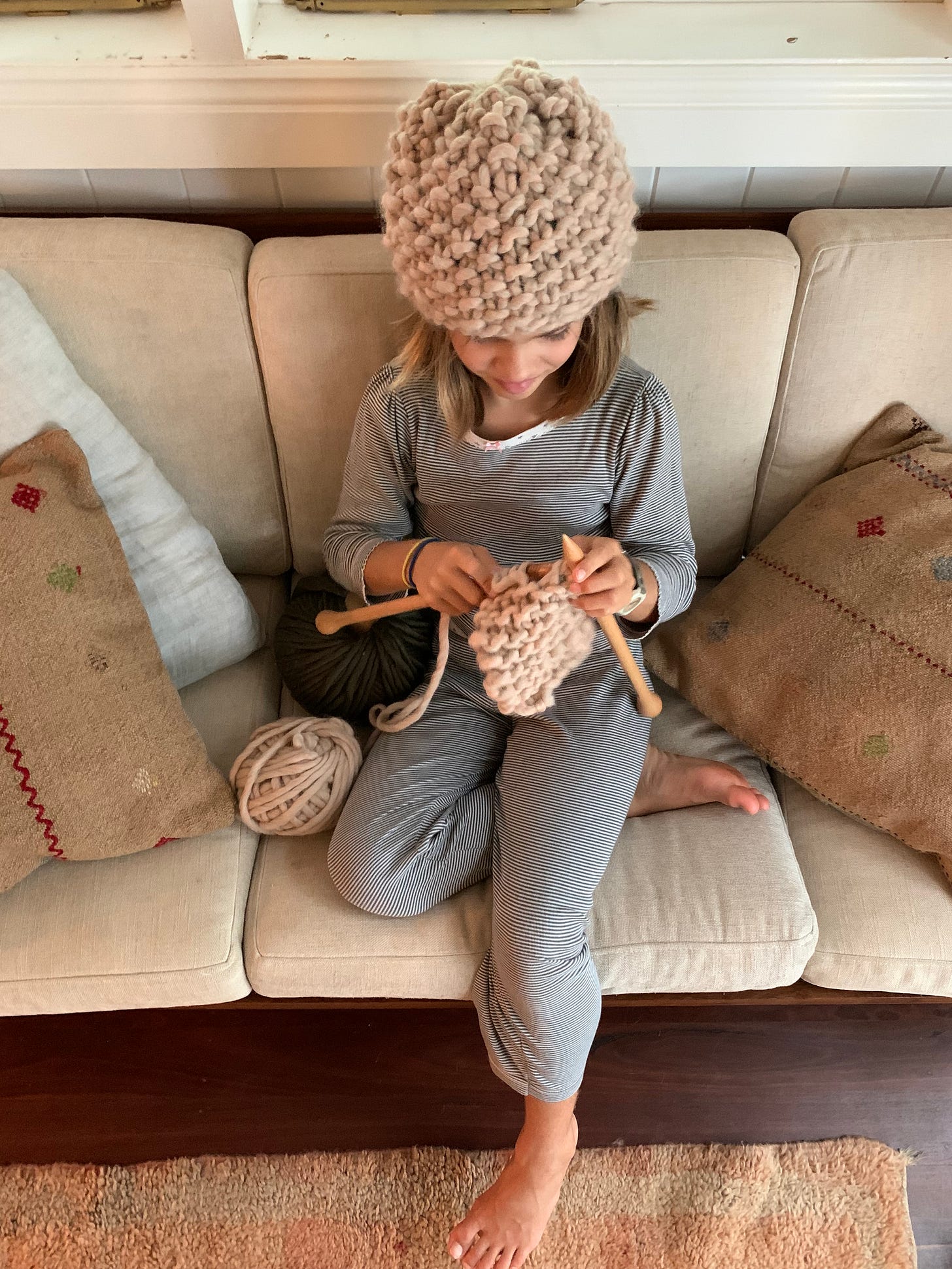
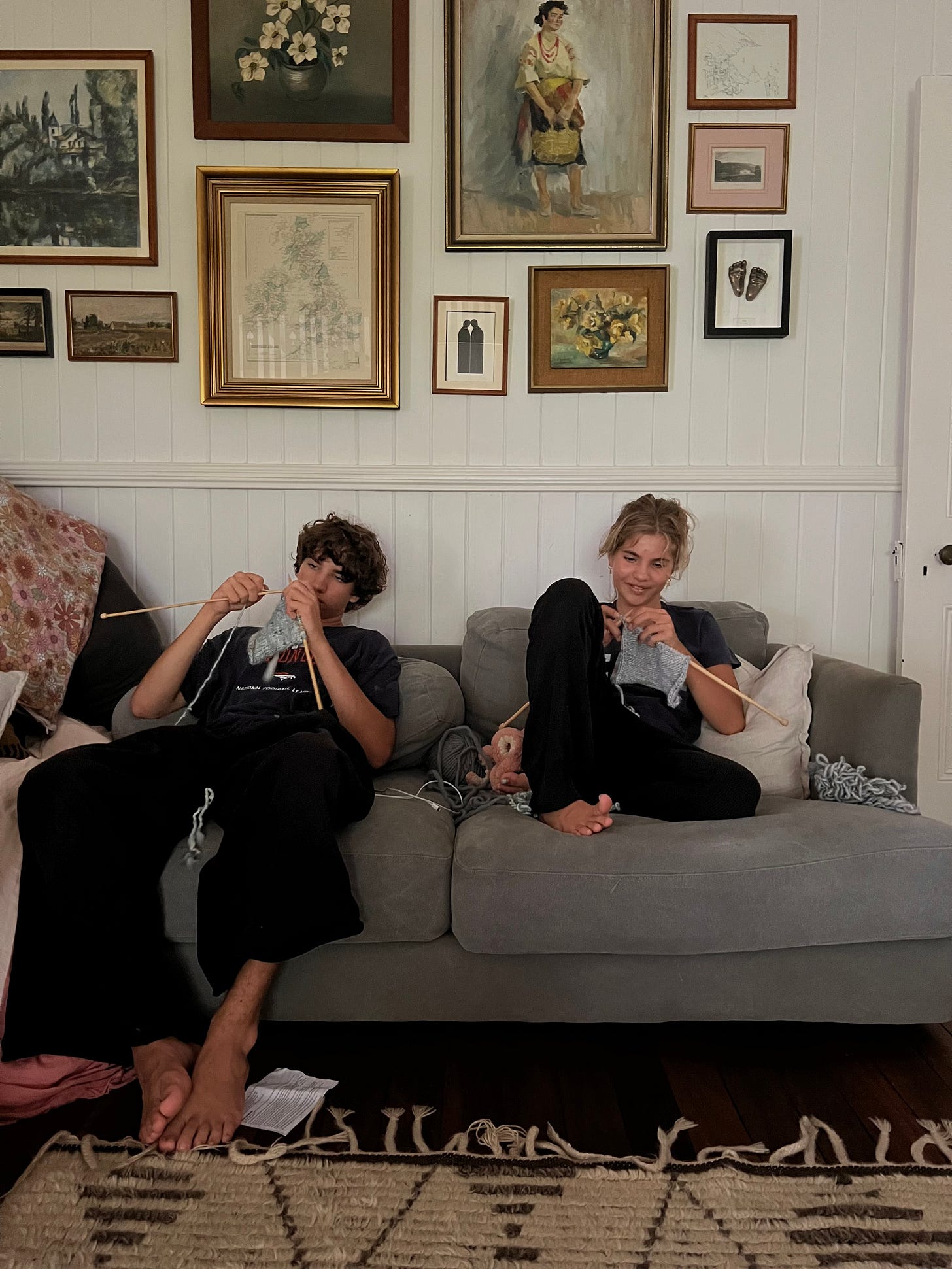
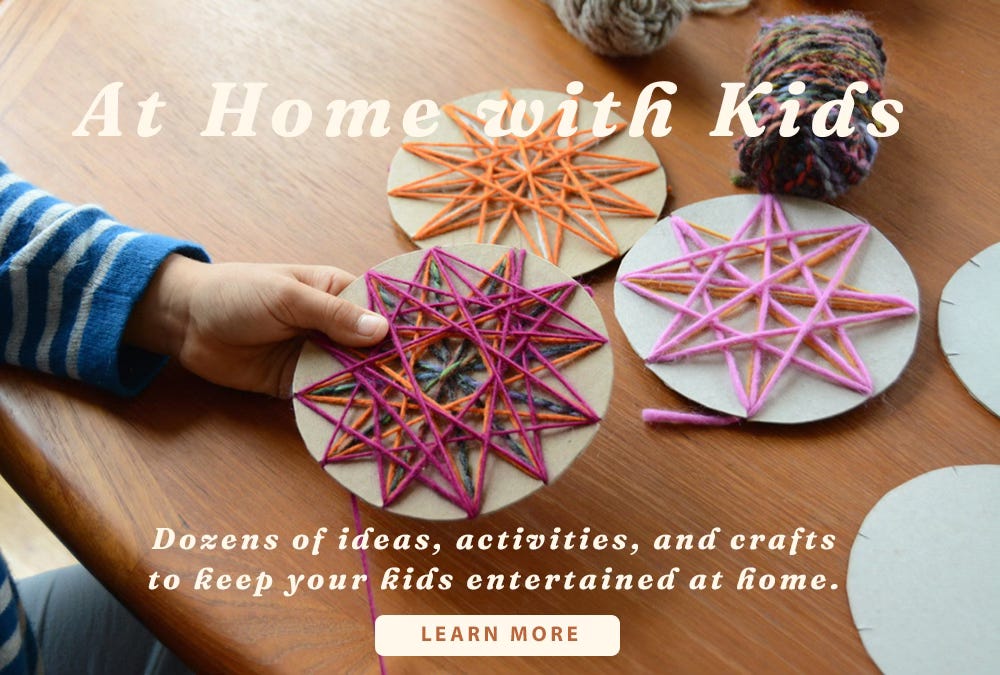
Tom Daley has the loveliest knitting videos on his YouTube. Unexpected and so nice!
Such a helpful post Courtney, the sound of knitting needles clicking together reminds me of my grandmother. Can I ask, how old were your children when learning to knit? My eldest is almost 6yrs old, so I'm wondering if she has the dexterity for it. Thanks!